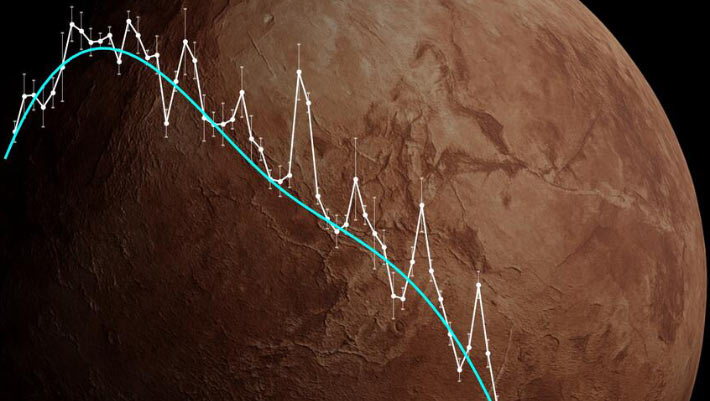Now Reading: Astronomers Detect Rare Cloud-Forming Chemical on Ancient Brown Dwarf
-
01
Astronomers Detect Rare Cloud-Forming Chemical on Ancient Brown Dwarf
Astronomers Detect Rare Cloud-Forming Chemical on Ancient Brown Dwarf

Swift Summary
- Astronomers have detected methane (CH₄), water (H₂O), and silane (SiH₄) gas in teh cold brown dwarf WISEA J153429.75-104303.3 (W1534).
- W1534, nicknamed “The Accident,” is located 50 light-years away in the constellation libra and is around 10-12 billion years old, making it one of the oldest known brown dwarfs.
- This finding marks the first detection of silane in any brown dwarf, exoplanet, or Solar System object.
- The object was identified by a citizen scientist participating in NASA’s Backyard Worlds: Planet 9 project in 2020.
- Initial near-infrared data from Gemini South telescope helped guide further observations conducted using the James Webb Space Telescope.
- The presence of silane provides key insights into how cloud formation and atmospheric composition differ between ancient and younger planetary environments:
– Older objects like W1534 allow silicon to bond with hydrogen to form lighter molecules that reach upper atmospheric layers.
– In newer formations like Jupiter or Saturn, silicon bonds with oxygen to form heavier molecules undetectable by telescopes as they sink beneath surface layers.
- Researchers emphasize that studying extreme objects like W1534 offers valuable outlook on understanding averages across planetary atmospheres.
Image Caption: An artist’s illustration showcasing a dusty atmosphere on a brown dwarf.Image credit: NOIRLab / NSF / AURA / R. Proctor.
Indian Opinion Analysis
The detection of silane on an ancient brown dwarf opens new windows into understanding planetary chemistry and atmospheric evolution across different eras. For India-an emerging leader in space research-such discoveries highlight opportunities for collaboration with international missions like NASA/ESA/CSA while fostering local advancements such as ISRO’s observational capabilities through upcoming projects like Aditya-L1 or Nyaka.
On a broader level, findings about primordial atmospheres could inform India’s focus on astrobiology initiatives under missions like Shukrayaan (focused on Venus). By expanding its role globally as an observer and participant in cutting-edge astrochemical research,India can leverage such studies for scientific growth while contributing to humanity’s broader quest for explaining cosmic origins.

























